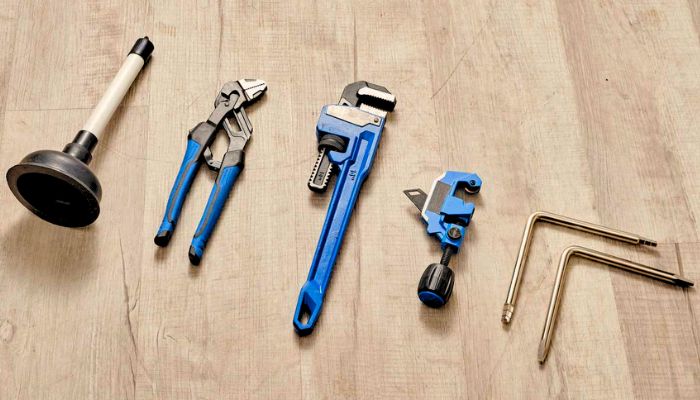Moving to a new house is an exciting milestone, especially for first-time homeowners. However, it can also be a stressful process, filled with endless to-do lists and concerns about ensuring a smooth transition. To help you navigate this journey, we’ve compiled the ultimate homeowner’s guide to preparing for a big move in day one, focusing on essential plumbing and packing strategies.
Weeks Leading Up to the Move
1. Home Checklist and Pre-Planning
- Start by creating a comprehensive moving checklist. This should include everything from hiring a professional moving company to updating your address with utility companies. As a contributing writer or editor-in-chief of your family’s moving story, it’s crucial to plan ahead to avoid last-minute chaos.
2. Packing Essentials
- Gather all necessary packing supplies early. This includes moving boxes, packing tape, bubble wrap, and labels. Remember, the right packing materials can save money and prevent damage to your belongings. Start packing non-essential items first, like decor and out-of-season clothing.
3. Inventory List and Organizing
- Create an inventory list of all items, especially valuable and bulky items. This will not only help you stay organized but also assist the moving company in preparing the right size moving truck or van.
4. Transfer Utilities and Update Important Documents
- Contact utility companies to transfer services to your new address. This includes electricity, water, gas, internet, and cable. Also, update your address on all important documents and notify your real estate agent, property manager, and loved ones about your move.
A Week Before Moving Day
1. Finalize Packing and Labeling
- By now, most of your packing should be complete. Label each box with its contents and the room it belongs to in the new house. This will make unpacking more efficient.
2. Prepare an Essentials Box
- Pack an essentials box for your first night in the new home. Include items like toiletries, a change of clothes, basic tools, cleaning supplies, and important documents.
3. Home Maintenance Check
- If possible, visit your new home and perform a basic home maintenance check. This includes testing smoke detectors and carbon monoxide detectors, locating the circuit breaker box, and identifying the main water shut-off valve.
4. Cleaning Service
- Consider hiring a cleaning service for your new home before move-in day. This ensures that you’re moving into a clean and welcoming environment.

Moving Day
1. Working with Professional Movers
- On moving day, work closely with the moving company. Ensure that all items are loaded onto the moving truck safely. If you have any last-minute items, such as cleaning supplies or essential documents, keep them with you.
2. Final Walkthrough
- Conduct a final walkthrough of your old house. Check all rooms, closets, and storage areas to ensure nothing is left behind. This is also a good time to clean coils in appliances and ensure everything is in working order for the new owners.
3. Safety and Emergency Preparedness
- Have an emergency response plan for moving day. This includes having a first aid kit on hand and ensuring everyone knows the location of the nearest hospital.
Upon Arrival at Your New Home
1. Unpacking and Organizing
- Begin by unpacking essential items. Set up key areas like the kitchen and bathroom first. Gradually move to other areas like the living room and bedrooms.
2. Plumbing Checks
- As soon as you arrive, check the plumbing in your new home. Look for any signs of leaks and ensure all faucets and toilets are functioning properly. If you’re not confident in doing this yourself, consider hiring a professional plumber to unclog drains or check the water heater.
3. Safety First
- Install smoke detectors and carbon monoxide detectors if they’re not already in place. Also, familiarize yourself with the home’s circuit breaker and main water shut-off valve for your family’s safety.
4. Meet the Neighbours
Introduce yourself to your neighbours. They can be a great resource for local information, from recommending a handyman to advising on home improvement stores new furniture out in the area.
Detailed Plumbing Checks and Set-Up
1. Inspect Plumbing Fixtures
- Upon moving in, inspect all plumbing fixtures. Check faucets, showers, and toilets to ensure they are in good working order. Look out for any leaks or drips that could indicate underlying issues.
2. Water Heater and HVAC System
- Assess the condition of the water heater and HVAC system. Clean HVAC filters and check the water heater’s temperature setting. It’s advisable for first-time homeowners to have a professional inspect these systems to ensure they are functioning efficiently.
3. Understand Your Home’s Plumbing
- Familiarize yourself with the plumbing layout of your new home. Locate the main water shut-off valve and understand how to operate it in case of emergencies. Knowing how to quickly respond can save you from potential water damage.
4. Plan for Future Maintenance
- Consider scheduling regular maintenance checks for your plumbing system. This proactive approach can prevent unexpected issues and help maintain your home’s value.
Settling In and Personalizing Your Space
1. Unpack and Decorate
- Continue unpacking and start decorating your new home. Arrange furniture and hang pictures to make the space feel more personal and welcoming. Remember, it’s okay to take your time to get everything just right.
2. Update Security and Safety Measures
- Ensure your new home is secure. This might include changing locks, setting up a security system, and testing smoke and monoxide detectors. Your family’s safety should always be a priority.
3. Explore Your Neighborhood
- Take time to explore your new neighborhood. Discover local amenities, parks, and community centers. Building a connection with your new surroundings can greatly enhance your living experience.
4. Establish New Routines
- Start establishing new routines. This includes setting up mail delivery, finding new healthcare providers, and transferring medical records. If you have children, help them adjust by exploring local schools and extracurricular activities.

Building Community Connections
1. Meet Your Neighbors
- If you haven’t already, introduce yourself to your neighbors. Building a friendly relationship with them can provide a sense of community and belonging.
2. Engage in Local Activities
- Participate in local events and activities. This can be a great way to meet people and integrate into the community.
3. Update Your Contact Information
- Ensure that your friends and family have your new address. Also, update your contact information with any professional services you use, like your bank or insurance company.
Final Thoughts and Moving Forward
1. Reflect on the Experience
- Take a moment to reflect on your moving experience. Consider what went well and what could have been done differently. This reflection can be invaluable for any future moves.
2. Embrace Your New Home
- Finally, take the time to enjoy your new home. Host a housewarming party to celebrate this new chapter with friends and family.
3. Continuous Home Improvement
- Remember, making a house a home is an ongoing process. Plan for future home improvement projects and continue to personalize your space.
Conclusion
Moving to a new home is a significant life event that requires careful planning and execution. By following this guide, you can ensure a smooth transition into your new home, with a special focus on plumbing essentials and community integration. Remember, moving is not just about relocating your belongings; it’s about starting a new chapter in a new place, where you and your loved ones can thrive. Welcome to your new home!



